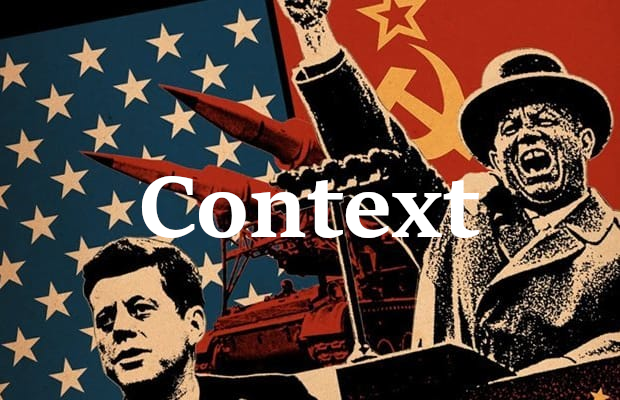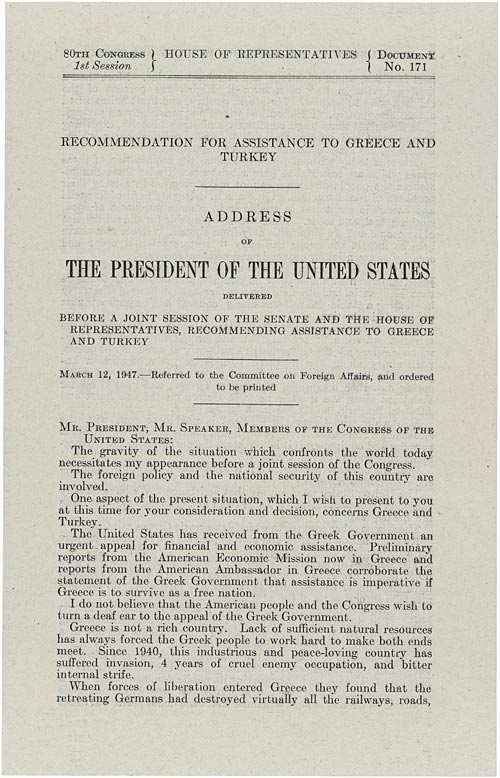Between March 12th, 1947 (the Truman Doctrine) and
December 26th, 1991 (the collapse of the Soviet Union), the
long ongoing conflict between the capitalistic United States and
the Communist Soviet Union known as the Cold War trod on.

Cold War: Tense Time Between the U.S and the Soviet Union, CNN, 1998

First Page of the Truman Doctrine, 1947, National Archives
World War II
The United States and the Soviet Union were a part of the Allied Powers during WWII. This happened after Germany invaded the SSR in 1941, thus breaking the German-Soviet Nonaggression Pact.
Throughout the war, the U.S was weary of the SSR, especially because of their communist regime that countered America's capitalistic lifestyle and their early exit from WWII. Despite this tension, they collaborated as allies to beat the Axis Powers.
During the Yalta Conference after WWII, the rivalry returned as the Soviet Union wished to reclaim its lost territories in Eastern Europe.
"We shall not realize our objectives, however, unless we are willing to help free
peoples to maintain their free institutions and their national integrity against
aggressive movements that seek to impose upon them totalitarian regimes."
Harry S. Truman, Truman Doctrine, March 12, 1947

Berlin Divided, Britanica
Spread of Communism
After WWII, Germany was divided into four zones controlled by the U.S,
France, Britain, and the SSR.The SSR utilized this opportunity to
create a physical seperation from these Western nations, which
eventually led to the Berlin Wall in 1961. Furthermore, Joseph
Stalin, the then premier of the SSR Union, sought to regain
territories lost during WWI and started staging communist coups in
Eastern countries, such as Bulgaria, Romania, and Hungary to build
the Warsaw Pact, an alliance of communist countries.
The prime example of these coups was the Vietnam War, an effort by
nationalists to unify Vietnam under a communist rule.
"Real liberty exists only there where exploitation has been annihilated, where no
oppression of some peoples by others exists, where there is no unemployment and
pauperism, where a person does not tremble because tomorrow he may lose his
job, home and bread."
Joseph Stalin, Interview Between J. Stalin and Roy Howard, March 1, 1936
Bay of Pigs Invasion Newsreel, C-Span, April 1, 1961
Bay of Pigs
Starting on April 17, 1961 and ending on April 20, 1961, the Bay of Pigs
operation was a U.S attempt to overpower the communist regime in Cuba,
which was under the influence and protection of the Soviet Union. This operation originally involved wiping out Fidel Castro's, the then Cuban dictator, air force and then performing a land raid; however, when the U.S Cuban-exile invasion force landed, they came under immense gunfire. With this being the first failed event under Kennedy's administration, many around the world feared that the SSR was too powerful for the U.S.